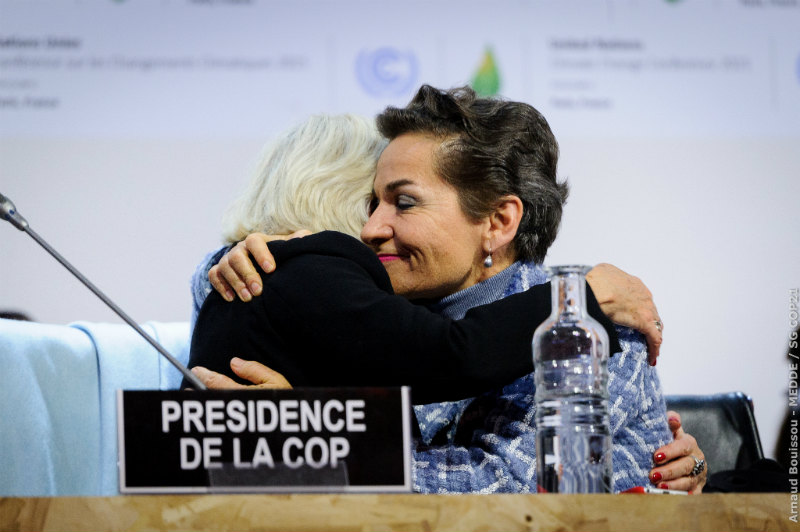Send to a friend
The details you provide on this page will not be used to send unsolicited email, and will not be sold to a 3rd party. See privacy policy.
[PARIS] A deal to reduce global emissions and help the world adapt to climate change was signed in Paris on 12 December — with earlier concerns that science would be ignored allayed by new promises.
The agreement, signed by 195 countries, states the “aim to reach global peaking of greenhouse gas emissions as soon as possible”. Nations will cut their emissions “rapidly” and “in accordance with best available science” to reach a “balance” between manmade emissions and carbon removals from the atmosphere after 2050, the text says.
In a departure from previous climate deals, the Paris agreement says all countries should aim to curb the global average temperature increase to “well below two degrees Celsius” above pre-industrial levels, and to “pursue efforts to limit the temperature increase to 1.5 degrees Celsius”.
What a difference a half-degree makes
Although not an official target, the reference to a 1.5 degree Celsius limit is a clear nod to the “high ambition coalition”, a group of over 100 countries that had pushed for stringent targets. This informal group includes some of the states most vulnerable to climate change, such as small island nations and arid African countries, as well as the European Union, the United States and other developed nations.
However, there is still a “gap between the science and the politics,” says Tim Gore, climate change policy lead at Oxfam International. On the one hand, the text recognises that the 1.5 degrees target is “a necessary guard rail to avoid the very worst impacts of climate change”, Gore says, but on the other hand the political action reflected in the text “falls some way short of that scientific benchmark”.
The deal tasks the Intergovernmental Panel on Climate Change to produce a scientific report in 2018 on the impacts of global warming by 1.5 degrees Celsius. While some observers see this request as a stalling exercise, others are more optimistic.“It's another tool to show that, ultimately, 1.5 degrees is the target the world should shoot for,” says Gore.
A previous report on the matter, issued by the COP Subsidiary Body for Scientific and Technological Advice, was rejected by India and Saudi Arabia during the negotiations.
Under the Paris agreement, governments must review their pledges to combat climate change, called intended nationally determined contributions, every five years. The IPCC report will give activists “a chance to take those findings and [put] pressure on countries to say 'here’s the benchmark, here’s what’s at stake',” Gore tells SciDev.Net.
In 2023, and every five years after that, governments will also take part in a “global stocktake” exercise to assess collective progress, “in the light of equity and the best available science”, the deal says.
“Science, including social sciences, will play a key role in implementing this agreement,” says the Research and Independent NGOs group, one of nine groups recognised by the UN as observers during the talks, as quoted by Jean-Pascal van Ypersele, IPCC vice-chair for its fifth assessment report, on Twitter.
Beyond tech transfer
The final agreement states that developing countries should be helped to build up their innovation systems through “collaborative approaches to research and development” and easing access to technology “in particular for early stages of the technology cycle”.
This means that the existing mechanisms under the United Nations Framework Convention on Climate Change “should really build innovation capabilities in developing countries, not just help them to train a few engineers to install and maintain solar panels,” says Heleen de Coninck, an environmental scientist at Radboud University in the Netherlands.
“What developing countries are interested in, and rightly so, is that their economies become more competitive [so they are] not dependent on other countries” to buy technology that may be expensive or inappropriate for local conditions, she says.
Some developed countries pushed backed against that idea, possibly for fear that developing countries become serious technology competitors, de Coninck explains. She says that the final, mildly-worded mention of collaborative R&D is a small win for developing countries.
The agreement sets a goal for developed countries to build up a fund that would pay out at least US$100 billion per year by 2020 “to further provide appropriate technology and capacity-building support” to poorer nations – a figure that is set to increase in future reviews. “Technology doesn’t get that much attention. Finance is the main bargaining chip,” says Gore.














